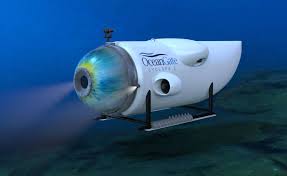The huge search for a missing submersible vessel near the wreck of the Titanic has entered a critical stage, as fears mount over the oxygen levels that may be on board.
If the sub is still functional and intact, it may only have low levels of oxygen left based on earlier estimates.
It went missing in a remote area of the North Atlantic on Sunday with a four-day oxygen supply for its crew of five.
And on Thursday many questions remained over how it could be recovered.
The minivan-sized submersible, which was owned and operated by the private company OceanGate Expeditions, is yet to be located. If it is found, it will need to be reached by complex rescue equipment and then brought to the surface in an operation that would likely take hours.
That would need to happen before the oxygen supply runs out and without damaging its structure or endangering those on board.
The condition of the vessel and its crew of five is unknown, but the US Coast Guard said the operation remains a rescue mission. “This is a search-and-rescue mission, 100%,” Captain Jamie Frederick told reporters on Wednesday.
There appeared to be a glimmer of hope after officials said undersea noises had been detected by Canadian search planes on Tuesday and Wednesday.
But it is still unclear what these were, and officials said they may not have come from the submersible. Remote-controlled underwater search vehicles (ROVs) were deployed to the area where the sounds were detected but are yet to find anything.
One of the ROVs, deployed from the Canadian vessel Horizon Arctic, reached the ocean floor early Thursday morning. Several more were expected to arrive at the site later in the day, along with more multi-national support.
A French research ship, the Atalante, also arrived in the area on Thursday morning and deployed its own ROV, the US Coast Guard said. That robot is capable of researching depths below the Titanic wreck, which lies about 12,500 ft (3,810m) below the surface, and has experience of surveying the Titanic.
The overall area of sea being scoured is about 26,000 sq km (10,000 sq miles), twice the size of the US state of Connecticut. The area is prone to stormy conditions and poor visibility which makes search operations more challenging, experts say.
BBC


